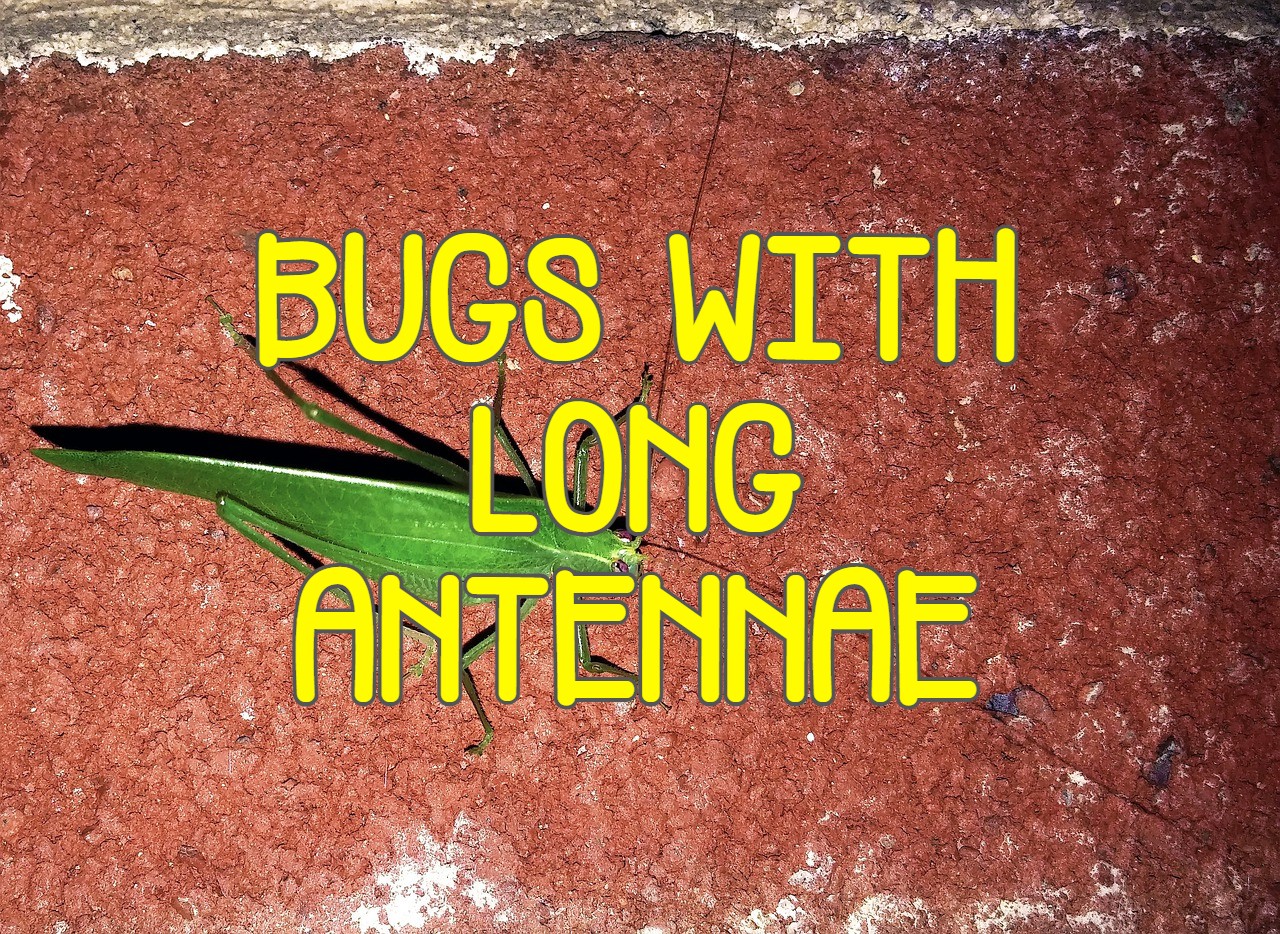Antennae are vital sensory organs for many insects and bugs. Some species have evolved to have extraordinarily long antennae for enhanced sensory perception. These bizarre looking bugs with lengthy antennae are captivating to observe and learn about. Let’s explore some of the most fascinating bugs with long antennae.
Why Do Some Bugs Have Long Antennae?
Antennae have various functions, including smell, touch, taste, and balance. Long antennae increase the sensory range and acuity of these organs.
There are several potential advantages to long antennae:
-
Enhanced Smell – Long antennae allow bugs to detect odor molecules at greater distances. This helps locate food, mates, and predators.
-
Tactile Sensing – Longer antennae can better probe the terrain and detect objects to avoid collisions. Some cave crickets rely on antennae to navigate dark environments.
-
Mate Detection – Long antennae pick up pheromones emanating from potential mates further away. Some male moths have elaborate feathery antennae to detect female pheromones.
-
Balance – Long protruding antennae enhance the sense of equilibrium for some insects
-
Predator Avoidance – Antennae detect subtle air currents or vibrations signaling an approaching predator, Extra antennae length provides an earlier warning
8 Fascinating Bugs with Remarkably Long Antennae
Let’s look at some of the most incredible bugs endowed with extra long antennae and how they utilize these bizarre appendages.
1. Longhorn Beetles
Longhorn beetles belong to the Cerambycidae family of beetles. There are over 20000 species of these elongated beetles characterized by very long antennae.
Some longhorn varieties like the titan beetle have antennae longer than their bodies. The aptly named Decora longicorn beetle has crazy antennae up to three times its body length!
The long antennae contain chemoreceptors to detect plant odors and pheromones for finding mates. Their long, flailing antennae also aid balance and orientation as the beetles fly.
2. Caddisflies
Caddisflies are odd looking flies commonly found living near streams, rivers, and lakes. They have four large, hairy wings and a pair of excessively long, thread-like antennae.
The antennae are covered in sensory receptors and help the caddisfly detect suitable locations to lay eggs near water. Their long antennae also maintain equilibrium in gusty conditions near water bodies.
3. Crickets
Male crickets are famous for their chirping songs to attract mates. Crickets have a pair of large eyes as well as two extremely long, thread-like antennae.
A cricket’s antennae allow it to pick up chemical cues from prospective mates. The antennae also sense approaching predators and sudden air disturbances.
Some crickets have antennae longer than their body length! Cave and camel crickets have antennae equal to their outlandishly long hind legs.
4. Katydids
Katydids, also called bush crickets or long-horned grasshoppers, have remarkably long, slender bodies and long legs. Matching their elongated build, katydids sport incredibly long, thin antennae.
Their lengthy antennae help katydids identify areas with appropriate vegetation for feeding and egg laying. The antennae also pick up mating cues.
5. Silverfish
Silverfish are creepy looking insects found hiding in damp areas of homes. In addition to their scaly silver appearance, they have a pair of freakishly long antennae projecting from their head.
The lengthy antennae help household silverfish navigate dark rooms using tactile feedback. They also detect humidity and warmth gradients to locate cozy warm, damp crevices.
6. Cockroaches
Cockroaches have a pair of long, segmented antennae projecting forward from their heads. These long sensory appendages help roaches probe surfaces, locate food, and stay oriented in cramped spaces.
Some roaches have antennae equaling up to 60-70% of their body length. Their antennae pick up scents and air currents to avoid danger and locate resources.
7. Cave Crickets
Cave crickets are bizarre looking hump-backed crickets with extremely long spindly legs and antennae. They use their lengthy antennae to orient and navigate through caves and other dark environments where they reside.
The whip-like antennae act as tactile sensors to probe surfaces and avoid obstacles in minimal lighting. Some cave cricket antennae are up to three times the length of their body!
8. Lacewings
Delicate looking lacewings have large, transparent wings and alarmingly long, thread-like antennae. Some species have antennae longer than their wingspan.
The lacewing’s lengthy antennae contain aircurrent sensing organs to detect approaching bats and other predators. Their antennae also help locate aphids and other small insects which the lacewings prey on.
Insects employ a variety of evolutionary adaptations for survival, including the development of bizarre looking extremity appendages like long antennae.
Specialized antennae help these organisms excel at finding resources like food, shelter and mates. Elongated antennae also equip them with enhanced sensory abilities to avoid predators and other environmental hazards.
The next time you see a bug with crazy long antennae, take a moment to appreciate the enhanced sensory capabilities these unusual designs provide. Exploring the weird world of insects never ceases to amaze!

Pest Learning Center

Beetle with huge antennae.
FAQ
What kind of bugs have long antennae?
Longhorned beetles receive their name from their extremely long antennae. They are a species of wood destroying insect that are found living throughout the United States. Adult longhorned beetles grow to be about 3/8th to 1 inch in length. They have an elongated body that is cylindrical in shape.
What are the tiny house bugs with long antennae?
House Crickets
They have long, thin antennae. This insect prefers warm, moist environments and can be found in kitchens, in basements and around water heaters.
What are the brown house bugs with antennas?
Adult field crickets are black and brown in color and are between 1/2 to 1 inch long. They have six legs, long antennae, and antennae-like appendages at the end of their abdomens called cerci.
What bug looks like a roach with long antennae?
Cockroaches typically have flattened bodies with long antennae. By contrast, jJune bugs have an oval-shaped body, reddish-brown color, and long antennae.Jun 10, 2024
What are antennae bugs?
Antennae bugs are insects that have long antennae to sense the environment. Mostly, they have six legs that can be either short or long, depending on the bug species. Many types of bugs can cause an infestation, including long antennae bugs. These bugs tend to live in groups, so if you see one bug, more are likely hiding nearby.
What insects have large antennae?
The whitespotted pine sawyer (Monochamus scutellatus) is an example of an insect with large antennae. It has a long, black body and is found in various insects, including ants, aphids, bees, beetles, and booklice. In conclusion, antennae are essential for insects to detect various sensory information, such as smells, humidity, and taste.
Are long antennae bugs dangerous?
Some of the bugs are harmless, while some of them are not. The long antennae bug is one type you may often find inside your home. Earwigs, cockroaches, caddisflies, silverfish, musk beetles, spined oak borer, stilt bugs, and Chariesterus are some types of long antennae bugs that can enter your house.
How do bugs use their long antennae?
Long antennae can have one or multiple purposes in bugs. It can help them stay away from potentially-dangerous situations or help them find the type of food they’re interested in consuming. Some bugs rely on antennae so much that they might even be longer than the bug itself. Bugs rely on antennae for many vital functions such as orientations.
What do Beetle antennae look like?
Beetle antennae are long and thin, often with a club-like structure at the end. These appendages are used to help the beetle smell its food and detect potential mates.
Which bugs rely on antennae for movement?
Some bugs have good vision and rely less on antennae for movement. Other bugs don’t have good vision and are almost dependent on antennae for movements and to avoid collisions. Cockroaches are among the species that heavily rely on antennae to avoid colliding with objects.
